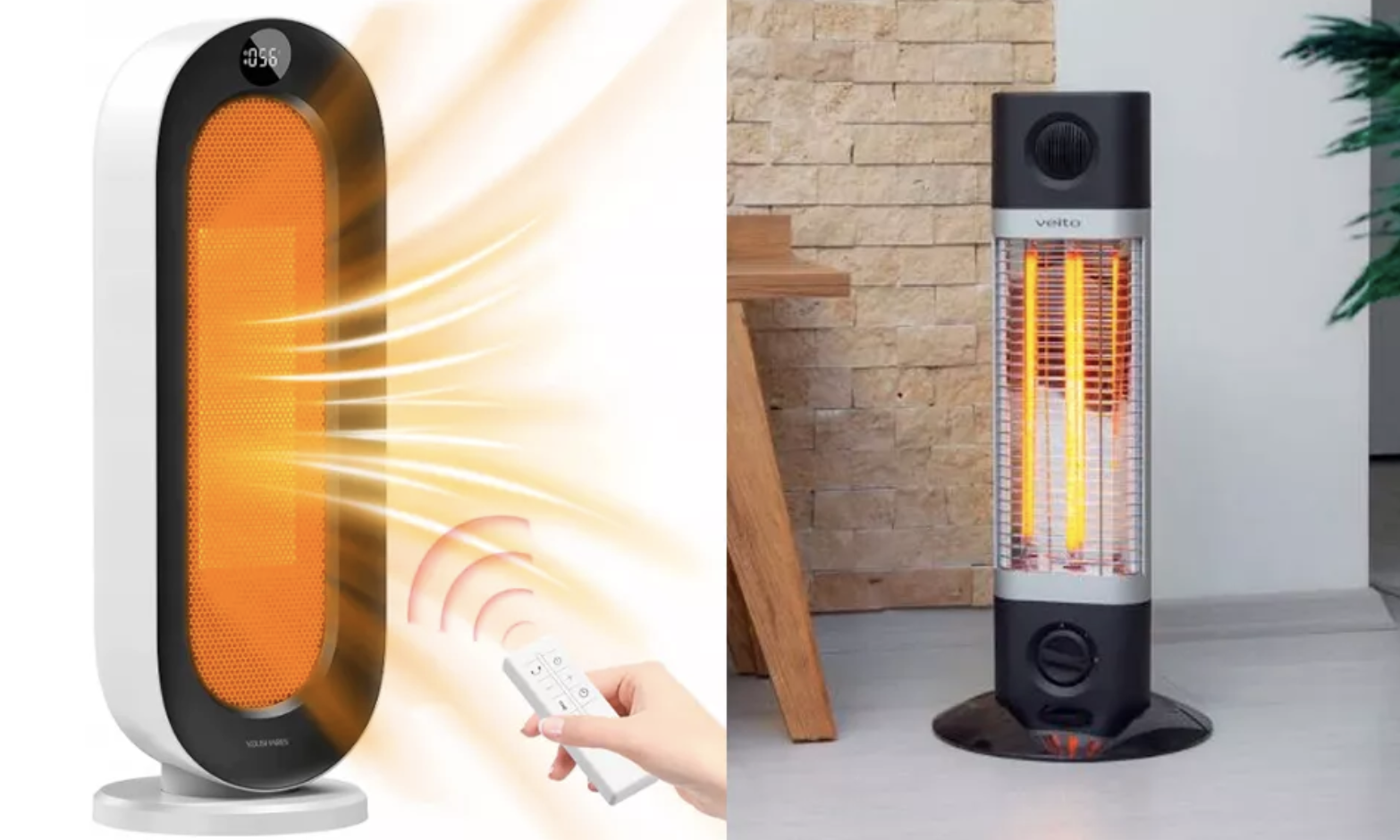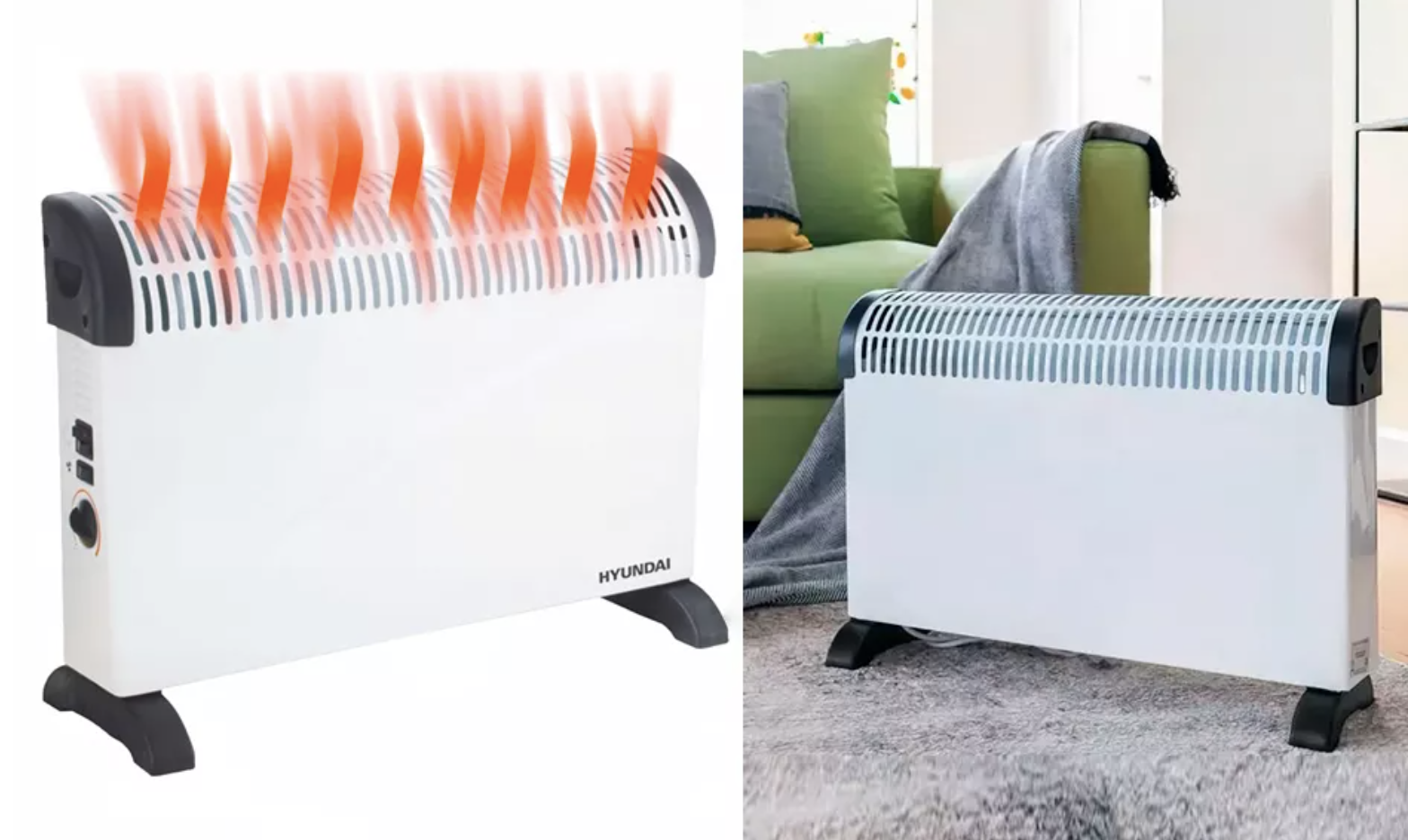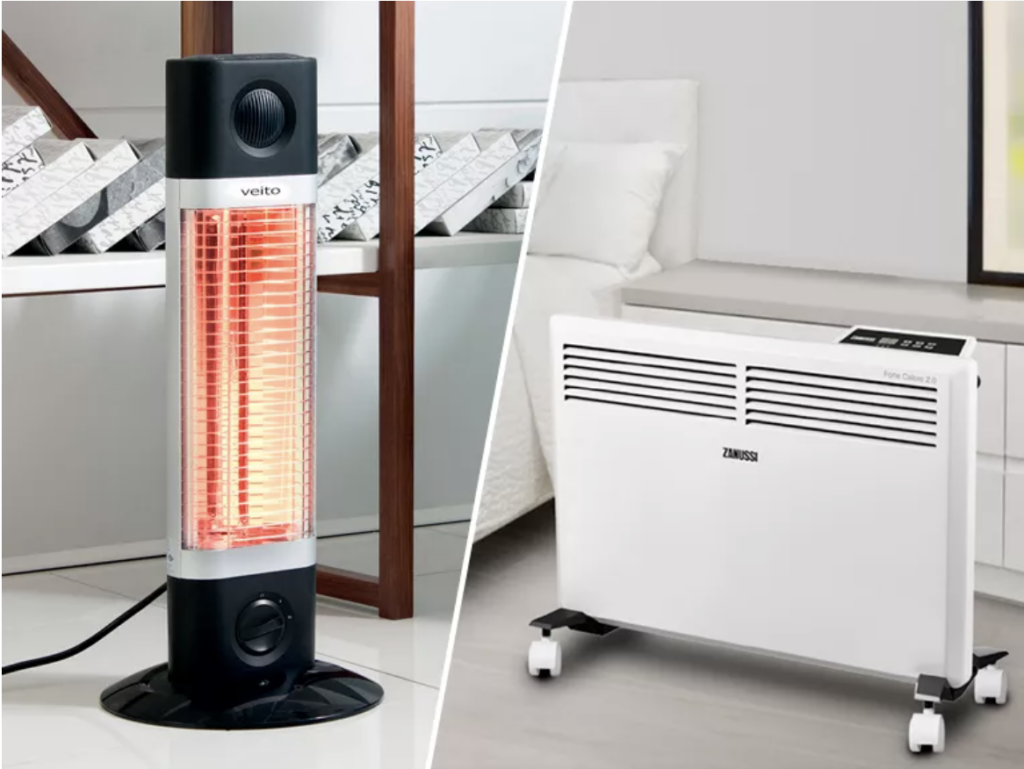| Parameter / Type of Heater | Infrared Heater | Convector Heater |
| Working principle | Radiation of infrared waves that directly heat objects and surfaces | Heating the air by convection, even heat distribution |
| Efficiency | High in small or poorly insulated rooms | High in large and well-insulated rooms |
| Energy consumption | Less (due to direct heating of objects) | Larger (to maintain temperature in a large space) |
| Cost of Acquisition | Above | Below |
| Cost of Operation | Lower (more economical in the long term) | Higher (especially in large spaces) |
| Installation | Simple, without special installation work | May require special installation work, especially for stationary models |
| Usability | Better for spot heating, but may not be suitable for sensitive people | Ideal for heating the whole room, safer for families with children |
| Safety | High, but light sensitivity must be considered | High, especially safe for children and animals |
This table summarises the main differences between the two types of heaters, based on their characteristics and applications. However, it is worth noting that specific parameters may vary depending on the model and manufacturer.
Let’s take a close look at each of these aspects.
Mechanism of Work
- Infrared Heaters:
- They work by emitting infrared light, which heats objects and surfaces in the room, as opposed to the surrounding air.
- This method of heating creates heat similar to that of the sun and helps to maintain a comfortable atmosphere without excessive dryness.
- Convector Heaters:
- Use the principle of convection to heat the air, which once heated rises upwards, forcing cooler air down towards the heater.
- This method provides a more even distribution of heat throughout the room.
Efficiency and Energy Consumption
- Infrared Heaters:
- Particularly effective in small or poorly insulated spaces, heating specific objects rather than the entire air.
- Can be more economical in terms of energy consumption due to targeted heating.
- Convector Heaters:
- Work better in large and well-insulated rooms, providing even heat.
- Their operation may require more energy to maintain a stable temperature in spacious rooms.
Price and Installation
- Infrared Heaters:
- Often cost more when purchased, but may be more economical in the long run.
- They are easy to install and do not require special installation work.
- Convector Heaters:
- Often more affordable.
- Installation, especially of stationary models, can be more labour intensive.
Usability
- Infrared Heaters:
- Optimal for localised heating.
- May not be suitable for people with certain skin conditions or photosensitivity.
- Convector Heaters:
- Ideal for continuous heating of the entire room.
- Safer in homes with children and pets, as their surface does not heat up to high temperatures. Convector heaters have a number of features that make them attractive for domestic use:
- Temperature control: Most convector heaters are equipped with thermostats, which allows you to precisely control the room temperature.
- Ease of Operation: They often have user-friendly control panels and can be fitted with remote controls for ease of use.
- Mobility: Many models can be easily moved around the house thanks to wheels or handles.
- Minimal Maintenance: Convectors require less maintenance than other types of heaters, making them convenient for long-term operation.
Infrared Heaters

Pros:
- Heating Efficiency: Directly heats objects and people rather than air, making them ideal for open or poorly insulated spaces.
- Energy efficiency: Less energy consumption due to direct heating, which can reduce energy costs.
- Fast Heating: Provides heat quickly, which is handy on cold days.
- Does not cause drying out of the air: Unlike other heaters, it does not dry out the air in the room.
- Quiet operation: They operate almost silently.
Minuses:
- Limited Coverage: Heats only the area to which it is directed, which may not be effective in large rooms.
- Safety: May be hazardous by direct contact, especially to children and pets.
- Cost: Often more expensive to purchase compared to convector heaters.
- Effect on Some Materials: Direct heat radiation may adversely affect some materials and furnishings.
Convector Heaters

Pros:
- Uniform Heat Distribution: Provides more even heating throughout the room.
- Ideal for Enclosed Spaces: Good for well-insulated spaces as they heat the air around them.
- Temperature control: Often equipped with thermostats to control the temperature.
- Safety: Generally safer for homes with children, as their surface does not get excessively hot.
Minuses:
- Air drying: May cause air to become too dry, which is uncomfortable for people with respiratory problems.
- Energy consumption: Larger spaces may use more energy to keep warm.
- Time to Heat: May take longer to heat the entire room compared to infrared heaters.
- Noise: Some models may operate with slight noise due to the fan or other mechanical parts.
Each type of heater is suitable for specific conditions and requirements. When selecting a heater, it is important to consider the size and insulation of the room, as well as personal preferences for humidity and heat levels.
The choice between infrared and convector heaters depends on the specifics of the room and the individual needs of the users. Infrared heaters are preferable for quick and localised heating, while convector heaters are better suited for uniform and constant heating of large spaces. Both types have their advantages and disadvantages, so the choice should be based on specific requirements for comfort, safety and efficiency of use.
Take your next step in the world of infrared or convector heaters with reBITme and enjoy the benefits. Enjoy your purchases!





